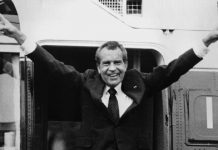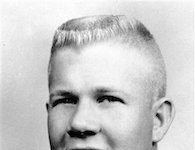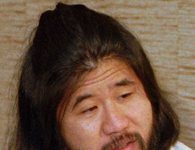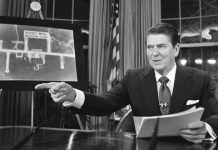On Oct. 14, 1962, a United States spy plane spotted missile bases under construction in Cuba, touching off the two-week Cuban Missile Crisis.
Two Weeks in Crisis
The United States had knowledge that its Cold War enemy, the Soviet Union, had been shipping defensive arms to communist Cuba, located just 90 miles from the Florida coast. It was not until October 1962 that the U.S. discovered the Soviets were installing nuclear arms in Cuba.
An Air Force U-2 spy plane piloted by Maj. Richard Heyser photographed suspicious activity near San Cristobal. Upon analysis by the National Photographic Interpretation Center in Washington, D.C., the photographs were determined to be sites for launching medium-range ballistic missiles.
The next day, more missions over Cuba were conducted while the director of the CIA and key White House staff were notified of the threat. President John F. Kennedy was not shown the photographs until Oct. 16, when he began to form a plan of retaliation against Cuba and the Soviet Union.
President Kennedy assembled a council, the Executive Committee of the National Security Council (ExComm), to help him determine an appropriate response. After three days of debate, ExComm ordered a naval blockade around Cuba to prevent weapons from being delivered to the country. Kennedy also demanded that Soviet Premier Nikita Khrushchev immediately withdraw the high-powered offensive weapons from Cuba or face an attack on that country.
On Oct. 22, 1962, Kennedy went on television and radio to announce the Soviet armament of Cuba, and the subsequent U.S. quarantine and demand that the Soviets remove the missiles. While he waited for Khrushchev’s response, Kennedy ordered more surveillance of the Cuban missile sites, as well as attacks on any Soviet ships that crossed the quarantine line.
Many historians call Oct. 26-27 the days during which the Cuban Missile Crisis came to a head. Khrushchev cabled the U.S. saying he would withdraw the missiles if the U.S. agreed not to invade Cuba. But before Kennedy could respond, Khrushchev sent another message demanding that the U.S. remove its nuclear missile bases from Turkey.
Kennedy stood firm and ultimately, Khrushchev withdrew his second demand on Oct. 28, 1962, and pulled the weapons out of Cuba soon after.
Background: The Cold War
When the United States emerged from the 1940s as one of the most powerful countries in the world, the Soviet Union responded by becoming America’s greatest rival. Though the two countries never directly fought a war with each other, their fundamental disagreement over communism—the basis for the Cold War—played out in other ways: the space race and the nuclear arms race are two examples.
The Cold War officially ended in 1991 with the dissolution of the Soviet Union. Prior to that, the toppling of the Berlin Wall in 1989 was considered a major victory and one of the final steps toward defeating communism and ending the war.











